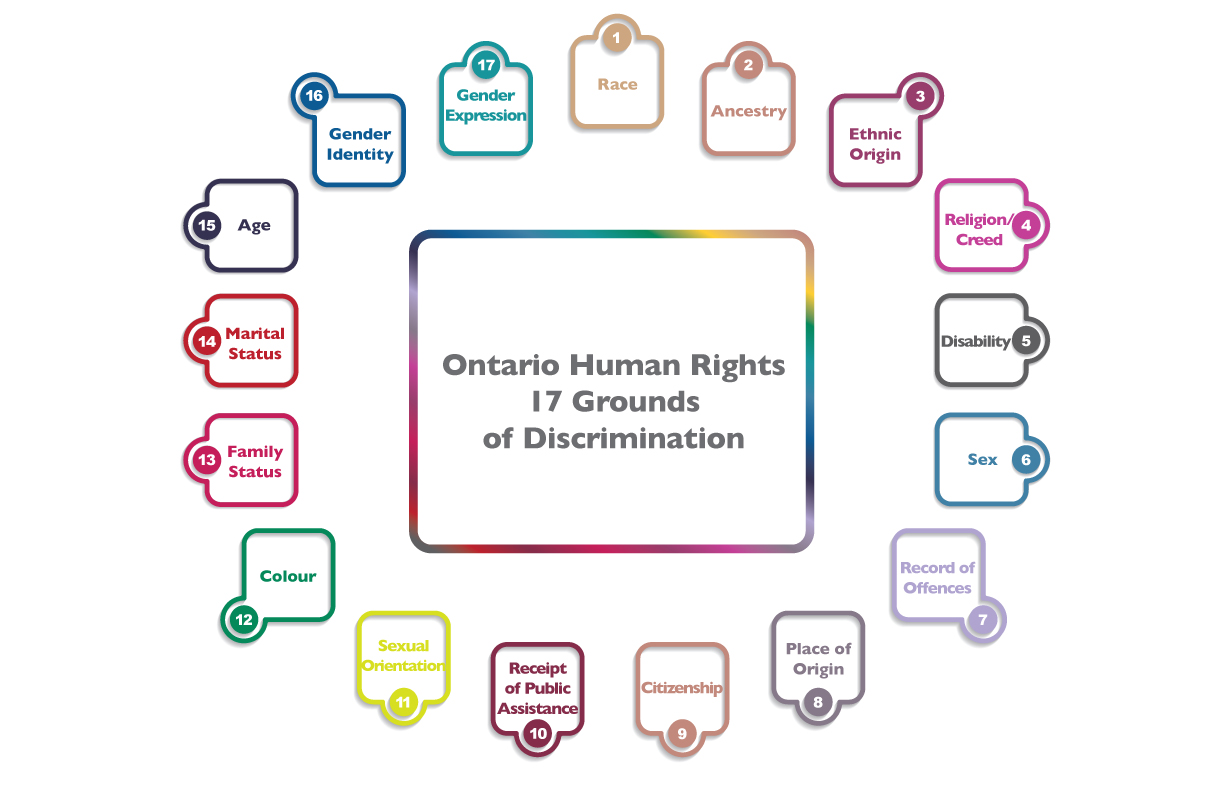Ontario's Human Rights Code, the first in Canada, was enacted in 1962.
The Code prohibits actions that discriminate against people based on a protected ground in a protected social area.

Ontario's Human Rights Code (the Code) identifies 17 protected grounds (Code grounds) on which discrimination is prohibited:
- Age
- Ancestry
- Citizenship
- Colour
- Disability
- Ethnic Origin
- Family Status
- Gender Expression
- Gender Identity
- Marital Status
- Place of Origin
- Race
- Receipts of Public Assistance
- Record of Offences
- Religion / Creed
- Sex
- Sexual Orientation
The Code also prohibits discrimination in 5 social areas:
- Accommodation
- Contracts or agreements
- Employment
- Goods, services and facilities
- Membership in unions, trades or professional association
A person may identify with multiple Code grounds because their social identity can overlap and intersect - this is known as intersectionality. When a person is experiencing discrimination and/or harassment, this can be experienced on multiple Code grounds at the same time due to intersectionalities.